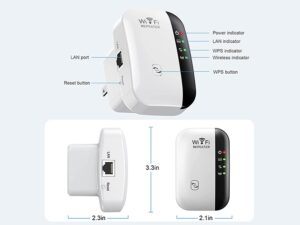Gartner revealed the need to optimize costs and scarce resources during the coronavirus pandemic is helping drive RPA adoption.
The coronavirus pandemic has inadvertently pushed production of robotic process automation (RPA). Half of US healthcare providers will invest in RPA in the next three years, up 5% from today, Gartner announced and said in a press release, “Healthcare providers are caught in a perfect storm of shrinking payments, improving outcomes, enhancing patient experience and bolstering innovation credentials.”
Costly tech must optimize healthcare
To treat and manage chronic conditions and mental health is very costly—nearly 90% of the $3.3 trillion in the US. Healthcare spending and cost optimization is critical for any technology applied to boost the flow and efficiency of healthcare delivery. Virtual assistants and AI cloud services can also be used to lead healthcare organizations to positive growth, but for this purpose, RPA is a standout among AI technology, Gartner says.
SEE: Coronavirus: Critical IT policies and tools every business needs (TechRepublic)
“Cost optimization is a consistently recurring theme among healthcare providers,” said Anurag Gupta, research vice president at Gartner. “The money that RPA saves by not having to spend as much on an unreformed process translates into cash that is available for front-end clinical functions, which is especially important while healthcare organizations combat the COVID-19 crisis.”
Gartner said it surveyed 161 finance executives on May 3, 2020, and found that nearly a quarter of them anticipated more spending on RPA during the coronavirus pandemic to drive cost optimization.
AI takeover
Gartner’s finding revealed that by 2023, 20% of all patient interactions will involve some form of AI enablement within clinical or nonclinical processes, up from less than 4% today.
As COVID-19 has decimated communities globally, the need for the US healthcare system to find ways to reveal “hidden insights,” as Gartner refers to them, that might be found in patient data. The more information decision makers have, the more streamlined the system will be.
In the cloud
The need to reveal more information from that patient data drives demand for AI cloud services, which Gartner said is why more than one-third of all healthcare workloads will be in the cloud by 2023.
“Even prior to the virus outbreak, 41% of healthcare provider CIOs experienced a funding shortfall, according to the 2020 Gartner CIO Survey,” Gupta added. “The early promise of RPA is to help reduce these operating cost pressures that sit on the top of healthcare provider CIOs’ list of challenges.”
Benefits to healthcare from cloud-based AI
Healthcare providers can use cloud-based AI to predict patients’ upcoming needs and can also identify optimum interventions before the patients’ conditions start to deteriorate. Cloud-based as-a-service solutions have become the preferred strategy for CIOs who need to innovate while controlling costs by converting capital expenditure (capex) outlays to operating expenditures (opex), the Gartner survey said.
“This strategy offers healthcare providers better leverage to spend on higher-value objectives, such as evidence-based decision-making capabilities that solve business problems and challenges like the coronavirus pandemic,” Gupta said.
How RPA helps healthcare providers
RPA combines user interface recognition technologies and workflow execution. That combination mimics a human’s mouse-clicks and keystrokes to drive applications and execute system-based work. The technology has been very effective when used for non-vertical-specific tasks, such as staffing an IT help desk and critical vertical-specific tasks, i.e. physician credentialing and verifying insurance eligibility, according to Gartner As automating simple, routine tasks, RPA will optimize costs and outputs, and give healthcare resources the time to focus on higher-value tasks.
Also see

Image: Getty Images/iStockphoto
Source of Article




